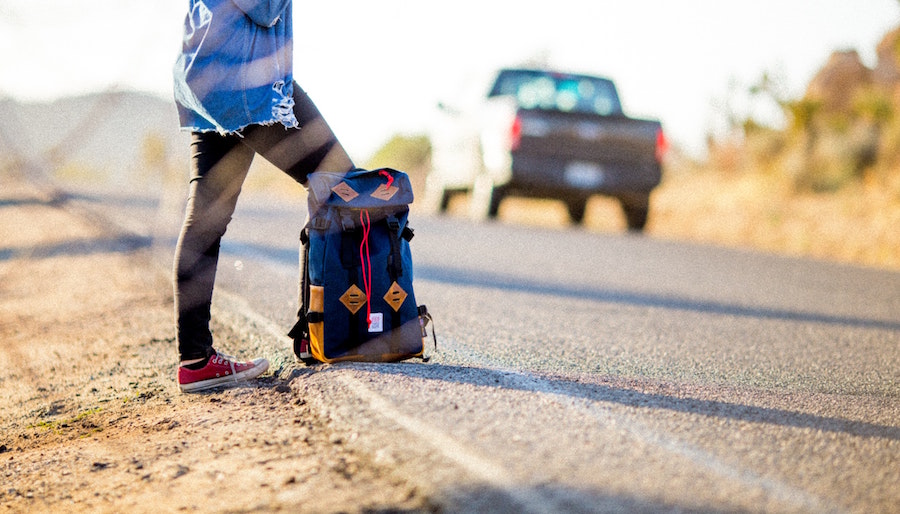
Recently a plaintiff’s appeal was denied by the Supreme Court of Canada after it was found that a driver was not liable for hitting the pedestrian on a rural road without a sidewalk.
The recent findings of this case bring to the surface a question that many BC drivers and pedestrians have – who has the right of way when it comes to pedestrians and drivers sharing a road without sidewalks? This is a good question, given the number of rural roads and highways throughout the province that are in near proximity to small towns and communities. Today, we’re going to answer this question. We’ll provide tips for drivers seeking to mitigate the risk of liability and help everyone stay safer out of the roads!
6 Things BC Drivers Need to Know (and do) to Reduce Liability Risk When There Are Pedestrians on Roads and Highways Without Sidewalks
What the BC Motor Vehicle Acts Says
Pedestrians using rural roads have a clear responsibility to do so in a safe manner:
“If there is no sidewalk, a pedestrian walking along or on a highway must walk only on the extreme left side of the roadway or the shoulder of the highway, facing traffic approaching from the opposite direction.” (BC Motor Vehicle Act – Section 182)
The Act also dictates that pedestrians must not be on a roadway to seek a ride (i.e. hitchhike) or to solicit employment or non-emergency assistance from an occupant of a vehicle. Drivers also have a role in helping to keep everyone safe. Read on to see how you can help.
Exercise Due Care Despite Right of Way
Drivers have a strict responsibility to steer clear of pedestrians who are on the highway, whether they are there legally there or not. In fact, consider it an obligation to use your horn to alert them to corrective action. This act alone can help reduce your liability as it shows that you did everything in your power to warn a pedestrian who was not following protocol.
SLOW DOWN in Road Construction Zones
One of the best things you can do to reduce the risk of hitting a pedestrian on a highway and road without sidewalks is to recognize higher risk areas. Roads running through rural towns are obvious, but when it comes to the highway you need to be mindful of one especially high risk zone – road construction sites. During activity, there will be flag people and other warning signs demanding you slow down, but even in the “off hours” it’s a good idea to proceed with extreme caution. There may still be workers in the area, and they may pop out unexpectedly from behind temporary work sheds or heavy machinery.
SLOW DOWN NEAR REST AREAS
The areas around rest stops are also high-risk pedestrian zones that may not be protected from lowered speed limits. People that have pulled over may be exiting the vehicle or already be walking around the area – especially children who are using the opportunity to stretch their restless legs with an unsupervised run.
Outside of designated rest areas, take note of pulled over cars where the shoulder is wide enough to allow them to do so, as drivers/passengers may be outside of the vehicle. This includes situations where highway patrol has pulled someone over for speeding.
Remove All Potential for Distraction
We like to think that by now, drivers know to enter their vehicle without bringing distraction to the front seat with them. That means no snacks, no coffee cups, no phones, no cosmetics, and no pets. It’s a nice thought. But when it comes the highway, many people return to their bad driving habits as they have a long road ahead.
Should you allow these distractions to come on to the highway, you significantly reduce your ability to spot unexpected pedestrians on the shoulder of the road. Take note of the following tips to removing distraction from your vehicle when heading onto the rural roads of BC:
- 5 Things Inside Your Car That May Block Your Vision
- Safe Driving with Dogs
- Smartphone Addiction and How to Prevent Distracted Driving
- 5 Other Distractions While Driving
- Most Common Driver Diversions
Take Photos After the Fact
In the aforementioned case of Jadhav vs Kielly, the judge chastised police who were on the scene for not taking photos. In the unfortunate event of an accident, protect yourself and take photos of the scene. A photo can provide a snapshot of the event, proving that your vehicle remained outside of the roadside dirt or gravel (as applicable) and clear you from liability, assuming that you were not at fault. The more evidence you collect the better because unlike urban and suburban streets there will not likely be any other witnesses, and you want to avoid getting into a your-word-vs-theirs battle over liability.
Once again we find another scenario where you will gain greater peace of mind with more comprehensive automobile insurance. Contact Park today to receive a independent review of your current policy so that you’re better prepared for all that can occur on the roads and highways this summer season and beyond.